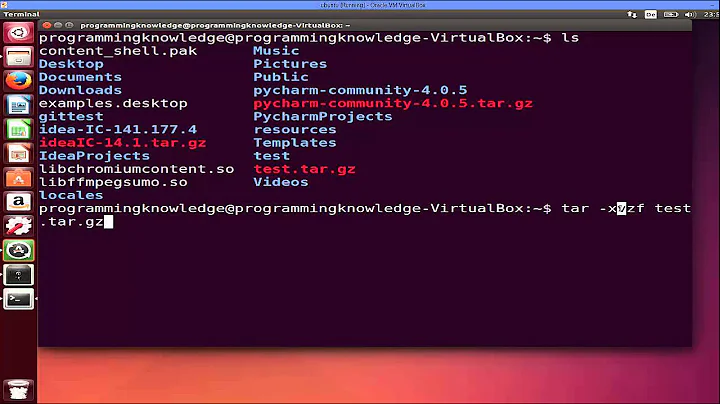How do you extract a single folder from a large tar.gz archive?
tar stores relative paths by default. GNU tar even says so if you try to store an absolute path:
tar -cf foo.tar /home/foo
tar: Removing leading `/' from member names
If you need to extract a particular folder, have a look at what's in the tar file:
tar -tvf foo.tar
And note the exact filename. In the case of my foo.tar file, I could extract /home/foo/bar by saying:
tar -xvf foo.tar home/foo/bar # Note: no leading slash
So no, the way you posted isn't (necessarily) the correct way to do it. You have to leave out the leading slash. If you want to simulate absolute paths, do cd / first and make sure you're the superuser. Also, this does the same:
tar -C / -xvf foo.tar home/foo/bar # -C is the ‘change directory’ option
There are very obvious, good reasons why tar converts paths to relative ones. One is the ability to restore an archive in places other than its original source. The other is security. You could extract an archive, expect its files to appear in your current working directory, and instead overwrite system files (or your own work) elsewhere by mistake.
Note: if you use the -P option, tar will archive absolute paths. So it always pays to check the contents of big archives before extracting.
Related videos on Youtube
Garrett Hall
Updated on September 18, 2022Comments
-
Garrett Hall over 1 year
I am using this command on a 5GB archive
tar -zxvf archive.tar.gz /folder/in/archiveis this the correct way to do this? It seems to be taking forever with no command line output...
-
 Admin about 12 yearsDid you use an absolute or relative path? Should be relative, other than that it looks right. How long did you let it run, and how good is your system? It will take at least several minutes on a fast machine. Potentially an hour or more? I'm running a test now.
Admin about 12 yearsDid you use an absolute or relative path? Should be relative, other than that it looks right. How long did you let it run, and how good is your system? It will take at least several minutes on a fast machine. Potentially an hour or more? I'm running a test now. -
 Admin about 12 yearsYes, it completed after ~1hr, but the absolute path was wrong, you were correct.
Admin about 12 yearsYes, it completed after ~1hr, but the absolute path was wrong, you were correct. -
 Admin about 12 yearsOn Linux, you can watch how far into the archive
Admin about 12 yearsOn Linux, you can watch how far into the archivetaris withcat /proc/$(pidof tar)/fdinfo/0(adapt the command if you have more than onetarprocess running). -
 Admin about 7 yearsThe important part is also no trailing slash. Using
Admin about 7 yearsThe important part is also no trailing slash. Usingfolder/folder2/won't work.
-
-
cjaphe almost 10 years
--strip-components=Nmay be useful to some here. -
 santiago arizti over 7 yearsin my case it was necessary to write
santiago arizti over 7 yearsin my case it was necessary to write./foldername/instead offoldername, I guess that it was because when I created the tar I created it withtar -cvf santi.tar ./*and when I "listed" the tar this is what it saiddrwxr-xr-x santi/santi 0 2016-04-11 09:42 ./foldername/ -
 Peter Krauss almost 7 yearsAnd about
Peter Krauss almost 7 yearsAnd about.gz? -
Simon Gates almost 7 years@PeterKrauss change
-xvfto-xzvf(adding the-zoption) and obviouslyfoo.tartofoo.tar.gzor whatever your archive is named. The same holds for-j(bz2) and on some recent versions,-J(xz). Otherwise, a pipeline likezcat foo.tar.gz | tar -xvf - …also works. -
Bo R about 5 yearsAnd remember, if you are tired of all the verbose output during extraction just skip the
vin all the examples. E.g.,tar -tf foo.tarandtar -xf foo.tar ....




